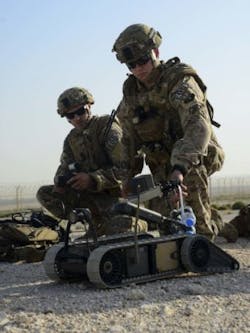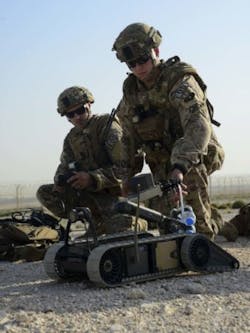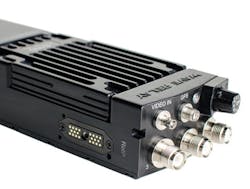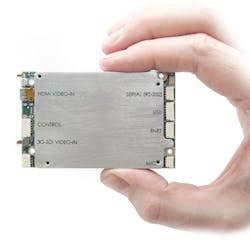Endeavor Robotics Man Transportable Robotic System UGV taps Persistent Systems data communications to detect, counter threats
NEW YORK and CHELMSFORD, Mass. Tactical ground robotics specialist Endeavor Robotics in Chelmsford, Mass., is building a fleet of up to 1,200 mid-sized unmanned ground vehicles (UGVs) to help U.S. Army soldiers detect and confirm potentially lethal threats at a standoff distance under a $100 million U.S. Department of Defense (DOD) Man Transportable Robotic System Increment II (MTRS II) contract with an option for an additional $58 million worth of deliverables. Endeavor’s MRTS II remotely operated, man-transportable, robotic system employs secure, long-range data communications technology from Persistent Systems in New York City.
Engineers at Endeavor Robotics selected Persistent Systems’ MPU5 as the mobile ad hoc network (MANET) radio of choice to provide secure and long-range data communication for command and control (C2), video, CBRN, and other critical sensor data to the MTRS UGVs.
Endeavor Robotics engineers chose Persistent Systems to provide its onboard communications because the MPU5 provides the performance and feature set critical to the UGV’s mission and the U.S. Army’s success, officials say.
Specifically, the MPU5 is a 100+ megabit per second (Mbps), 3x3 multiple-input and multiple-output (MIMO) radio with up to 6 watts of transmit power to provide a long-range and secure Internet Protocol (IP) network in both line-of-sight (LOS) and non-line-of-sight (NLOS) environments. Its modular frequency architecture allows the operator to change radio-frequency (RF) bands – including L-, S-, and C-Bands – as needed by simply swapping radio modules. The Wave Relay MANET capability, for which Persistent is best known, maintains the UGV’s network connectivity in a dynamic multi-hop mobile ad hoc network.
"We are honored to win and look forward to delivering a great robot to the US Army,” Endeavor Robotics CEO Sean Bielat says. Endeavor Robotics intends to hire roboticists, engineers, and support staff to help fulfill this and other recent contract awards; a majority of new positions will be housed in Endeavor’s Boston area facility. “This large increase in staff creates a nice boost for the local and American economy,” Bielat adds. “We are full of pride today and we can’t wait to get started.”
“We’re extremely proud of our partnership with Endeavor Robotics and congratulate them on this very important award,” says Dr. Herbert Rubens, CEO of Persistent Systems. “The U.S. Army has been a long-standing customer of Persistent Systems, and we appreciate the opportunity to deliver potentially 2,400 more MPU5 radios to support this UGV mission, the U.S. warfighter, and the U.S. Army.”
Persistent and Endeavor announced their partnership in July 2016 and have been working together since. “Persistent builds a great radio and has been a great partner to Endeavor. We look forward to working together on this Army program,” says Endeavor Robotics President Tom Frost.
The MRTS Increment II contract award has been officially awarded to Endeavor Robotics by the U.S. Army’s PEO CS&CSS program office. Low-rate initial production should begin in the 2018/2019 timeframe.
The MPU5 radio comes in two forms: handheld and embedded. It has an Android computer and a video encoder/decoder (for a really good video frame rate). The computer runs the WaveRelay waveform that enables mobile ad hoc networking (MANET). Basically, each MANET radio acts radio as a relay station, creating a robust, self-healing beehive of voice, video, text, sensor, and map traffic without the need for external infrastructure. Since the radio network is digital, users can have many "channels" taking up little bandwidth, and can also hook legacy radios into this network. The radio also has three multiple input/multiple output antennas that leverage and blend the bouncing radio waves in tunnels and urban canyons to get a more powerful signal.
Headquartered in New York City since 2007, Persistent Systems LLC is a global communications technology company which develops, manufactures, and integrates a patented and secure Mobile Ad Hoc Networking (MANET) system: Wave Relay. The company’s R&D team has designed wireless networking protocols to support its cutting-edge Wave Relay system and technology. Wave Relay transmits and receives data, video, voice, and other applications under the most difficult and unpredictable conditions. Its suite of products is field proven and utilized in commercial, military, government, industrial, agriculture, robotics, and unmanned system markets.



